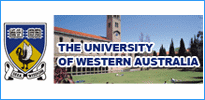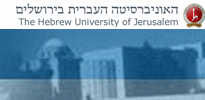Tunisia: Tunisia Education Profile
2012/04/05

Education is compulsory and free up to 16 years of age: basic education lasts for nine years. The school attendance rate is 97.7% between 6 and 11 years of age. He is classified among the best educational systems of the world.
School enrolment rates are:
- 99.2% for 6-year old children
- 97.7% for 6 to 11 year-old
- 75.1% for 12 to 18-year-old teenagers
- 36.2% for young people 19 to 24-year-old.
To provide for the ever growing number of students, a huge effort has gone into providing educational infrastructure.
There are:
- 4,513 primary schools
- 1,937 middle and high schools
- 192 institutions of higher education, of which one virtual university.
Tunisia is the first country on the southern shore of the Mediterranean which has annually graduate engineers and technicians per capita according to the survey 'National Industrial Strategy by 2016”, prepared by Ernst & Young in 2008.
In few years, the number of students has grew seven-fold and increased from 37,000 in 1986 to 360,172 students in 2009 including 59.5% girls.Thousands of Tunisian young people presently study in foreign universities, notably in USA, Canada, France and Germany. Institutions of higher learning are computerised and connected to Internet.
More and more young people choose the field of computer and communication science, engineering science and other technical careers. The number of university graduates in the various areas has reached 60 613 in 2008, 29 453 of which are engineers and technicians.
Quick assimilation of progress in technology
An important effort has been accomplished to better prepare young Tunisians for the dynamic pace of change in the country.
The government assumes the training costs through its funds for professional adaptation and insertion for English-language teaching programs and computer science courses for students in university. Numerous technological institutes have been established to increase the number of mid-level managers and to adapt training resources to the country’s needs.
- Research and technical centers established for almost all the business fields
- Technology parks set up for textiles, telecommunications and agri-business
- Increased number of experts for quality control and certification
-
Development of engineering, professional consulting and economic studies capacities.
A university open to the world
Priority goes to new professions and promising activities, with more of the short-duration courses sought by more than 30% of high school graduates as well as additional long-term options.
The university also plays an important role in designing ongoing training programmes, keeping up with technological advances.
Vocational training policy seeks to meet the needs of the job market in an efficient manner as well as those of young people who are looking to get started in professional life.
Programmes of vocational training are based on the principle that training should be organised by specialised centres in partnership with companies where trainees can get practical experience. To make such programmes optimal, professional federations are closely consulted to ensure that their needs are met.
Surveys have shown that 70% of graduates from vocational training centers have integrated easily into the labor market, the rate is 100% for some specialties.
Legislation and regulations support ongoing training on company premises. To this end, support mechanisms have been established to facilitate training. Companies that participate in this national endeavour can tap into financial assistance from the State.
Ongoing training activities
Refund of the levy on vocational training (for non exporting companies).
Financial support in the framework of the National Vocational Training Program
Coverage of up to 25% of the cost of training in the framework of incentives for technological Advances, up to 250,000 TND.
An important program
A major public investment program aims at reinforcing education at all levels.
The Ministry of Vocational Training and Employment has 212 training centers with a capacity of 56,900 positions.
Vocational training centers offer 451 areas of specialization covering all economic sectors.
The University of Tunis was founded in 1960. It absorbed the 1,100-year-old Zeitouna (or Great Mosque) University, devoted to Islamic studies, as well as several other institutions of higher education. Various institutes give advanced occupational training.
Education is given a high priority and accounts for 6% of GNP. A basic education for children between the ages of 6 and 16 has been compulsory since 1991. Tunisia ranked 17th in the category of "quality of the [higher] educational system" and 21st in the category of "quality of primary education" in The Global Competitiveness Report 2008-9, released by The World Economic Forum.
The enrolment rates are 98% for primary schools and 60% for higher education. Reforms in higher education began four years ago, known as the Licence, Mastère et Doctorat (LMD) system, aimed at introducing greater flexibility, better consideration of job-market needs and an improvement in the quality of teaching. None of Tunisia’s universities have yet been included, however, in the top 500 of the Shanghai Academic Ranking of World Universities. Only two institutions have been ranked in the top 100 academic institutions in Africa (in January 2010).
While children generally acquire Tunisian Arabic at home, when they enter school at age 6, they are taught to read and write in Standard Arabic. From the age of 8, they are taught French while English is introduced at the age of 12.
Colleges and universities in Tunisia include:
* Ecole Polytechnique de Tunisie
* International University of Tunis
* Université Libre de Tunis
* Université de l'Aviation et Technologie de Tunisie
* Institut National d'Agronomie de Tunis
* Université des Sciences de Tunis
Universities
- * Ez-Zitouna University, Tunis
- * University of Gabès, Gabès
- * Tunis University, Tunis
- * Tunis El Manar University, Tunis
- * Carthage University, Carthage
- * Manouba University, Manouba
- * University of Sousse, Sousse
- * University of Monastir, Monastir
- * University of Gafsa, Gafsa
- * University of Jendouba, Jendouba
- * University of Kairouan, Kairouan
- * University of Sfax, Sfax
- * Tunisia Private University , tunis
Special Universities/Institutes
* Virtual University, Tunis. Provide distance learning.
* Higher Institutes of Technological Studies
- o Tunis
- o Kebili
- o Gabes
- o Béja
- o Chrguiya
- o Gafsa
- o Djerba
- o Kairouan
- o Kasserine
- o Kef
- o Ksar Hellal
- o Mahdia
- o Nabeul
- o Radès
- o Sfax
- o Sidi Bou Said
- o Siliana
- o Sousse
- o Tataouine
- o Tozeur
-
o Zaghouan
- Tunisia News
-
- TUNISIA: Tunisia augments ICT exports and connectivity
- BOTSWANA: Routes Africa forum aims to improve African air connectivity
- BOTSWANA: Economic integration is helping boost trade and investment in Africa
- BOTSWANA: Africa’s economic growth is likely to be slower in the intervening years
- BOTSWANA: Beyond Commodities: How African Multinationals Are Transforming
- TUNISIA: Tunisia holds international exhibition on security equipment
- Trending Articles
-
- AUSTRALIA: Australia election: Over 15 million voters likely to exercise their franchise
- CHINA: Forty-six Chinese-owned companies registered in Guinea-Bissau
- SOUTH AFRICA: South Africa’s Biggest Labor Group to Balance Pay With Job Security
- ISRAEL: Israeli PM to embark on historic Africa visit boosting diplomatic, economic ties
- MALAWI: This $6 a month solar energy plan could power a million homes in Africa by 2017
- NIGERIA: Lagos hosts 2016 Africa fashion week Nigeria






.gif?1356023993)






